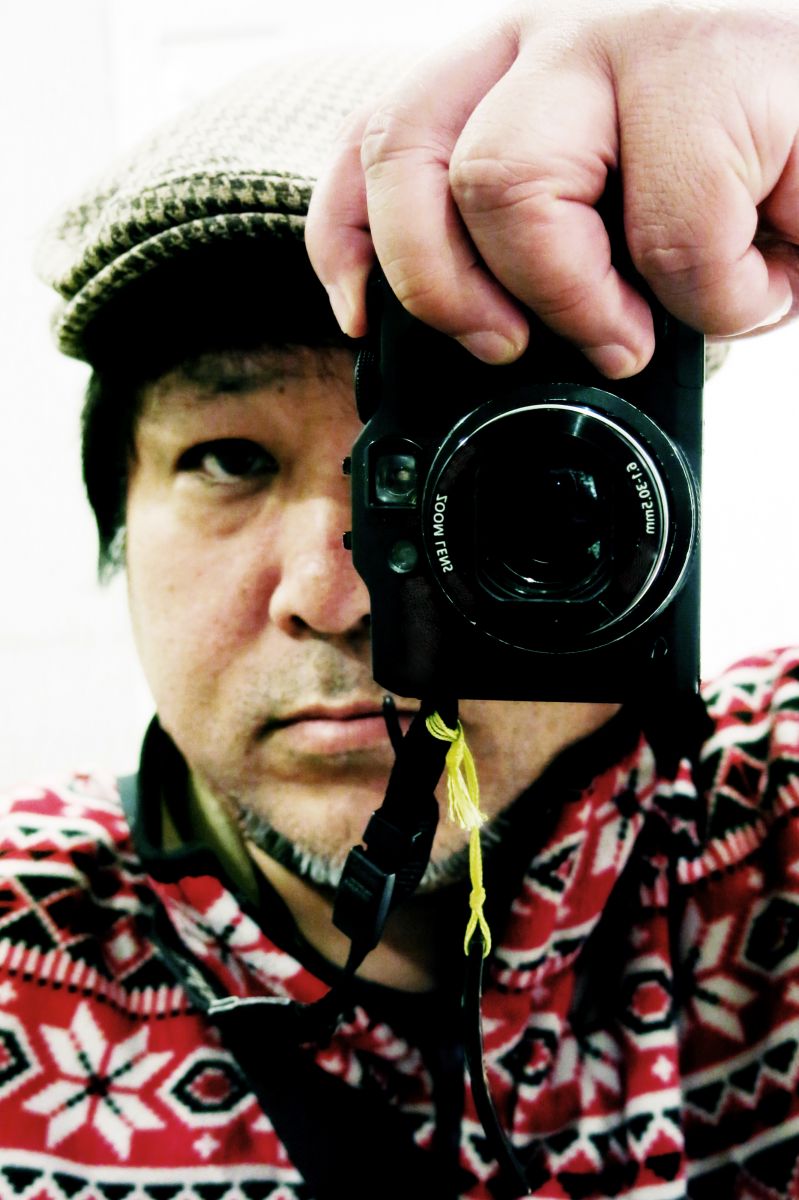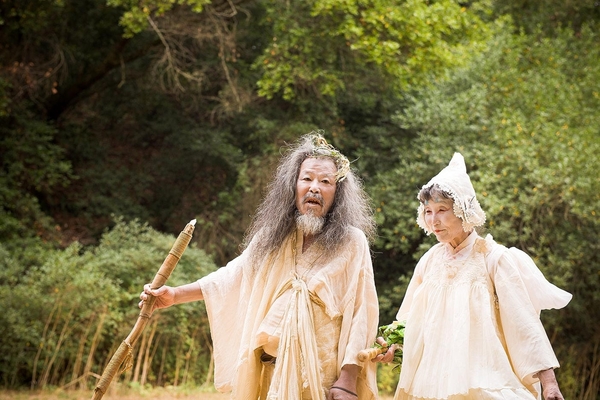

JFLA Butoh Series
Photography Exhibition
A Tribute to Tatsumi Hijikata's
"Yameru Maihime (Ailing Dancer)"
November 5 - November 27, 2019
***Opening Event with Special Guests’ Talk & Butoh Performance***
Tuesday, November 5 @7pm
Light refreshments will be served.
©Masahiko Taniguchi
Venue:
The Japan Foundation, Los Angeles
(5700 Wilshire Blvd., #100 Los Angeles, CA 90036)
Street parking is available near JFLA. Click here for parking info.
Admission: Free
Exhibition Hours:
Monday-Friday 10am-7pm, Saturday 12-5pm
11/12, 13: 10am-3pm
Closed on Sundays and Veteran's Day (11/11)
Six well-known Japanese Butoh dancers brought to life the ghosts rising out of the legendary essay “Yameru Maihime (Ailing Dancer)”, written by Tatsumi Hijikata in Akita, where the story developed during the years 1935-1938.
The photo book was published in Japan last year in order to celebrate the 90th anniversary of Hijikata's birth and to pay tribute to his unprecedented work. The photos were taken by Masahiko Taniguchi who has worked closely with many Butoh dancers in Japan. This exhibition will feature a selection from Taniguchi’s photo book, which has never been shown in the U.S. before as well as some of archival images of Hijikata.
The opening night of the exhibition will include Butoh performances by local dancers and an special talk: "Remembering Hijikata" by guest speakers.
About Tatsumi Hijikata & "Yameru Maihime"
 Tatsumi Hijikata (土方 巽) (March 9, 1928 – January 21, 1986) was a dancer/choreographer, and the founder of a genre of dance performance art called Butoh. By the late 1960s, he had begun to develop this dance form, which is intensely choreographed and includes stylized gestures drawn from childhood memories of his hometown in Akita, located in the northern part of Japan. It is this style which is most often associated with Butoh by Westerners.
Tatsumi Hijikata (土方 巽) (March 9, 1928 – January 21, 1986) was a dancer/choreographer, and the founder of a genre of dance performance art called Butoh. By the late 1960s, he had begun to develop this dance form, which is intensely choreographed and includes stylized gestures drawn from childhood memories of his hometown in Akita, located in the northern part of Japan. It is this style which is most often associated with Butoh by Westerners.
"Yameru Maihime (The Ailing Dancer)" is a text by Tatsumi Hijikata, in which he attempted to create a new form of butoh by transforming his childhood experiences and the landscape of Akita, Japan during the years 1935-1938 into a unique language. It is a literary masterpiece that also contains many insights into his artistic views, philosophy, his views on life and death, and his method of creation. Interweaving layered forms of expression with everyday sensibilities that only people from Akita can understand. The Ailing Dancer is known as an abstruse work which, like a maze into which one launches at first reading, is difficult to understand.
Photo:Hitoshi Zeniya
About Photographer

Guest Speakers on the Opening Night:

Photo:ROBERTO
Koichi Tamano (玉野黄市) is one of the masters of the Japanese dance form Butoh. When he was 18, he began his 10-year apprenticeship under Hijikata Tatsumi at the Asbestos Hall (アスベスト館) in Tokyo. He and his wife, Hiroko Tamano (玉野弘子), performed with Hijikata. Koichi founded Harupin-Ha in 1972 in Tokyo. The Tamanos first visited the United States in 1976 to perform at the "Japan Now" exhibition at the San Francisco Museum of Modern Art. Koichi and Hiroko introduced the dance form to the west coast of America.
Nobuko Yoneyama (米山伸子) is a founder of the non-profit organization, “Hijikata Tatsumi Akita Kinen Butohkai,” which keeps Hijikata's legacy alive and develops modern Butoh in the younger generations. She is a relative of Tatsumi Hijikata and has published “Deciphering Yameru Maihime (読み解き「病める舞姫」)"
Butoh Performance:
花名 Kanna Kai Jones (Choreographer, Dancer) , Takeshi Kanemura (Dancer), Kyoko Takenaka (Dancer)
Music:
John Kaizan Neptune (Shakuhachi), Shuichiro Asano (Shamisen: recorded), Mamiko Benoit & Masayo Haga (Vocal)
---------- Butoh Dancers in the Photos ----------
©Masahiko Taniguchi
Yukio Waguri (和栗由紀夫), a disciple of Tatsumi Hijikata, made his debut as a Butoh dancer in "27 Nights for Four Seasons." He continued to perform as a lead dancer for Hijikata until 1979. Besides performing and giving workshops in numerous countries, he has preserved and published Butoh-Fu notation (which is roughly described as “individual instances of subjective, conscious experience” notation) that he learned from Hijikata. Waguri died shortly after the photos were shot and failed to see the completion of the photo book.
Yoshito Ohno (大野慶人) is the son of the late Kazuo Ohno, who co-founded the butoh dance form with Tatsumi Hijikata. Yoshito first appeared as a young dancer in “Forbidden Colors(禁色)” in 1959. Yoshito Ohno, who turned 81 this year, has inspired artists of many disciplines and has performed in numerous countries. While Hijikata is said to embody the darkest aspects of butoh, and Kazuo Ohno is said to reflect its delicate lightness, Yoshito Ohno is often described as existing in both worlds, with a gift for navigating between fragile shadows.
Saga Kobayashi (小林嵯峨) was one of the original members of Hijikata's Butoh group. She danced in all of the works choreographed by Hijikata from 1969 to 1975. Kobayashi subsequently pursued her own Butoh dance, actively performing in many countries to explore the unconscious boundary between body and mind. In recent years, Kobayashi has reproduced (as close to the originals as possible) the performances she took part in, which were directed and choreographed by Hijikata.
Moe Yamamoto (山本萌) became a disciple of Tatsumi Hijikata in 1974 and performed at the Asbestos Hall. In 1976, Hijikata choreographed Yamamoto's debut solo performance, “Shomen no Isho (正面の衣装),” just as Yamamoto was becoming an independent dancer. Yamamoto founded Kanazawa Butoh-Kan (金沢舞踏館) in his hometown. Yamamoto and his wife, Kei Shirasaki (白榊ケイ), have been actively performing and giving workshops in many countries throughout Europe. Many Butoh dancers and enthusiasts from around the world gather to attend their Butoh workshops.
Yuko Yuki (雪雄子) met Tatsumi Hijikata for the first time in 1970. She danced with Dai-Rakudakan (大駱駝艦) in 1972. In 1975, she formed the Hoppo-butoh-ha (北方舞踏派) with Bishop Yamada (ビショップ山田), where she pursued Hijikata’s Butoh, specializing in depicting the northeastern climate and culture in her dance. Since 1993, she has lived in Tsugaru, Aomori, where she continues her solo performances.
This exhibition is cooperated by